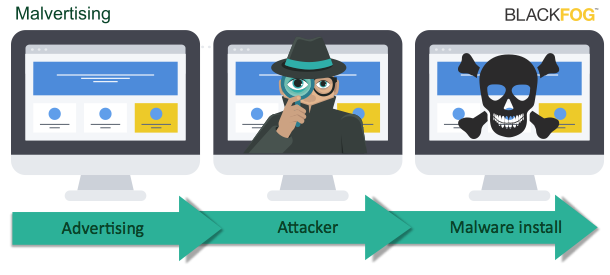
Malware, that malicious software that infects our computers may have just found a new distribution mechanism which is being called Malvertising. Traditionally spread through so called Phishing techniques, like emails that promise to make you rich or links to free software, malware is just a fact of life these days.

Distribution via Web Ads
While most people are wary of not clicking on links in emails from spam or people we don’t know, malware producers have discovered new ways to get their software onto your computer. Now they are infecting advertising networks in what is now being referred to as Malvertising. Malware distribution via web ads on major sites (including msn.com, nytimes.com, bbc.com, aol.com, my.xfinity.com, nfl.com, realtor.com, theweathernetwork.com, thehill.com, and newsweek.com) has recently been discovered. According to Malwarebytes, the affected networks included those owned by Google, AppNexis, AOL, and Rubicon. The attacks are flowing from two suspicious domains, including trackmytraffic[c].biz and talk915[.]pw.
Malvertising is now considered the leading threat vector, overtaking porn. Almost 1 in 5 cyber attacks is now through malvertising.
What can I do?
The only real way to prevent cyberattacks is to stop them from activating in the first place. BlackFog Privacy is designed to specifically block malware execution by disrupting their bidirectional communication back to their command centers.
By preventing activation, the malware has no way to activate and therefore is prevented from being installed on your computer.
BlackFog’s entire focus is on prevention. Rather than focusing on known vulnerabilities using perimeter defense techniques (at the Firewall) or signature based detection, such as virus and spyware scanners, BlackFog stops the activation and replication of new threats before they can cause any damage.

Related Posts
Microsegmentation: Strengthening Network Security Against Zero Day Exploits
Find out why microsegmentation is an increasingly popular option for supporting zero trust networking approaches.
Patch Management: An Essential Part of Data Security
Ensuring you have a strong patch management strategy in place is essential in minimizing the risks posed by known vulnerabilities.
Layered Security – How a Defense-in-Depth Approach Guards Against Unknown Threats
Make sure your systems are fully protected from threats at every level by incorporating these six key layered security defense strategies.
Zero Trust Data Protection: Securing Your Data in a Perimeterless World
What should firms know about zero trust data protection and how can they ensure it is implemented effectively?
ZTNA vs VPN: Choosing the Right Secure Remote Access Solution
What are the pros and cons of ZTNA vs VPN remote access solutions and which should firms consider?
Zero Day Security Exploits: How They Work and How to Stay Safe
Learn about the risk posed by zero day security exploits and what firms can do to minimize their exposure to these issues.






